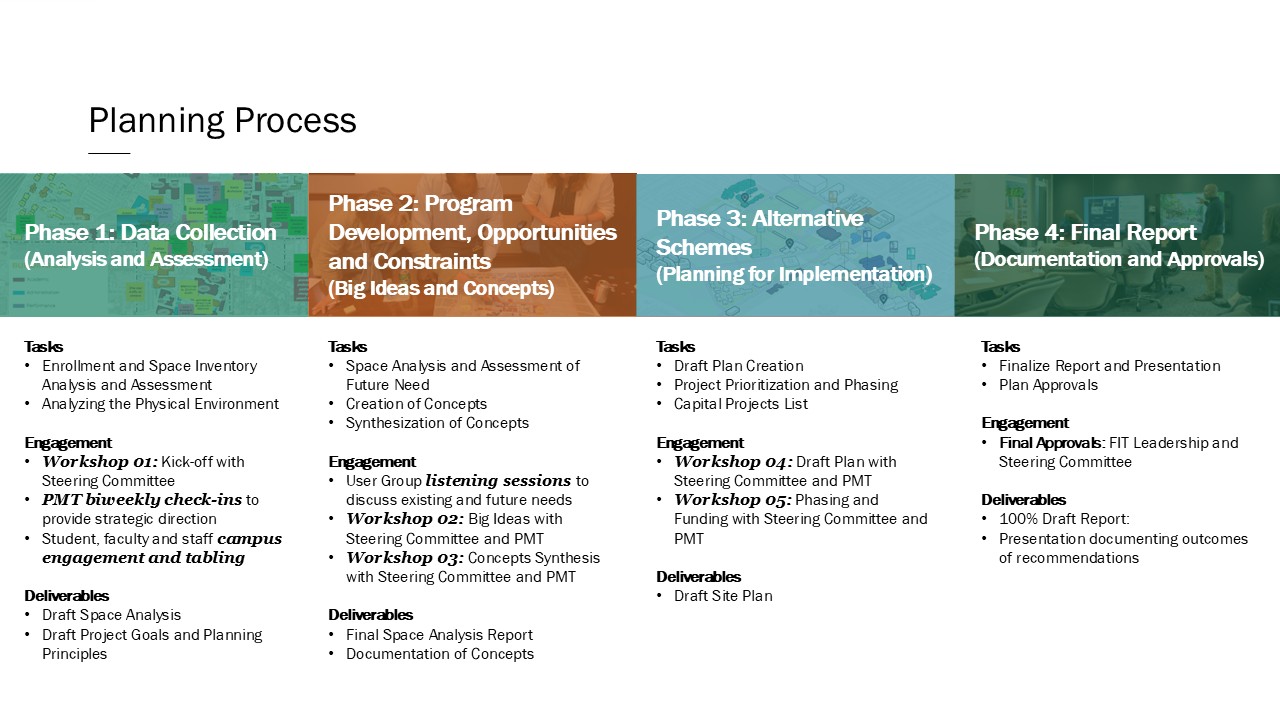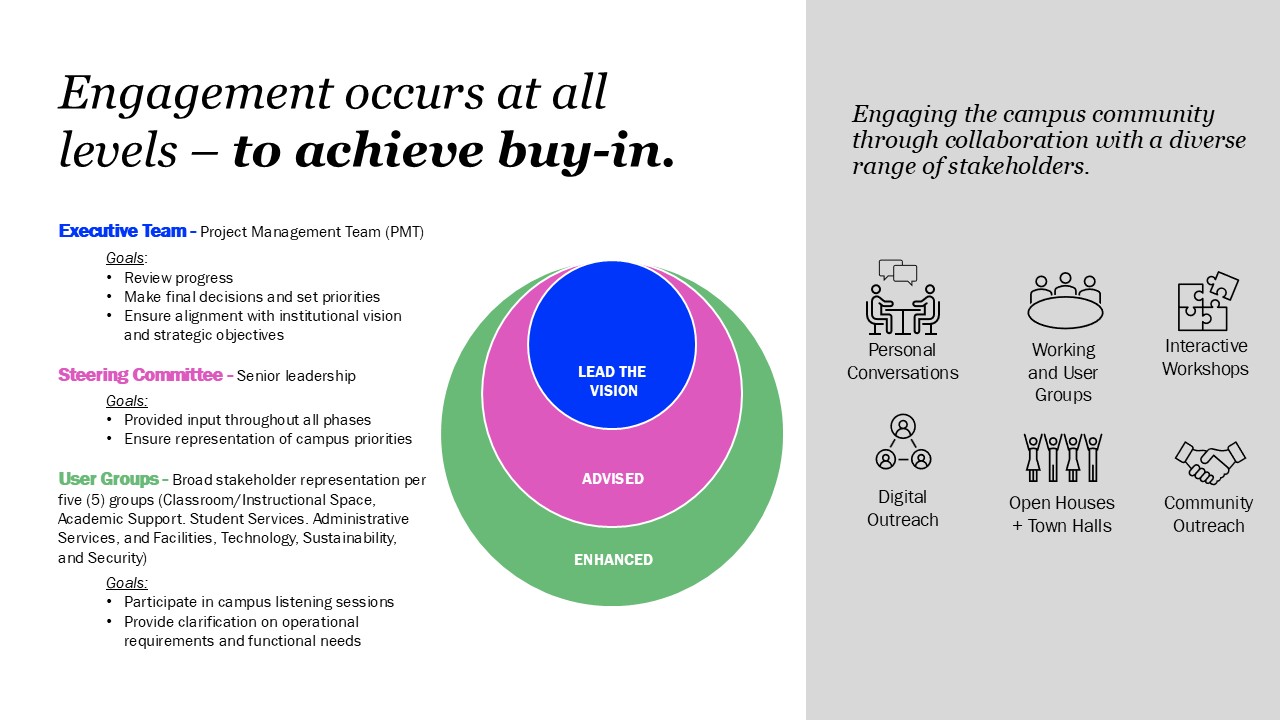Progress
FIT 2025 Master Plan—Planning Process Overview
The planning process is inclusive and comprehensive, structured into four phases with key milestones and stakeholder engagement throughout.

Phase 1 focuses on analyzing and assessing the existing campus. This includes reviewing enrollment trends, evaluating the current space inventory, and studying the physical campus environment. Through extensive data gathering and analysis, goals, opportunities, and needs are identified. The process integrates quantitative data with qualitative observations, supported by campus tours, the establishment of leadership to guide the process, and a visioning workshop that sets the foundation for future planning.
Phase 2 builds on the findings from Phase 1 to generate big ideas and conceptual frameworks. This phase moves into physical planning, developing site planning concepts with a flexible development framework. Stakeholders remain actively involved through listening sessions and two key workshops that encourage idea generation and feedback, ensuring that concepts align with institutional goals and future needs.
Phase 3 is the transition within the process toward implementation planning. Projects and improvements are prioritized based on return on investment, strategic value, and their impact on recruitment, retention, and completion. During this phase, the draft plan is reviewed through two workshops, allowing stakeholders to provide final feedback and considerations. Recommendations are organized into short-term, mid-term, and long-term phases, creating a clear roadmap for achieving enrollment goals and bundling improvements for efficiency.
Phase 4 concludes the process by confirming, documenting, and delivering the comprehensive 2025 Master Plan. The final report provides a detailed study of existing conditions, summarizes the planning process, and serves as a living document to guide future improvements. This phase ensures that the plan elevates the quality of education and campus life at FIT while remaining adaptable to evolving needs.
 Engagement Structure
Engagement Structure
Executive Team
The Executive Team includes the Project Management Team (PMT). Their goals are to review progress at key milestones, make final decisions on scope and priorities, ensure alignment with institutional vision and strategic objectives, and approve major deliverables and timelines.
Steering Committee
The Steering Committee consists of senior leadership and broad stakeholder representation. Their goals are to provide input throughout all phases, validate concepts and recommendations, ensure inclusivity and representation of campus priorities, and support communication and transparency across departments.
User Groups
There are five User Groups:
- Classroom and Instructional Space
- Academic Support
- Student Services
- Administrative Services
- Facilities, Technology, Sustainability, and Security
The goals of these groups are to participate in campus listening sessions, offer detailed feedback on functional needs, provide clarification on operational requirements, identify opportunities and constraints within their areas, and contribute to shaping concepts and validating proposed solutions.